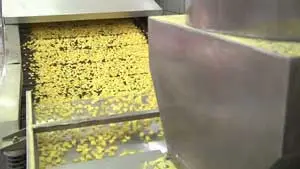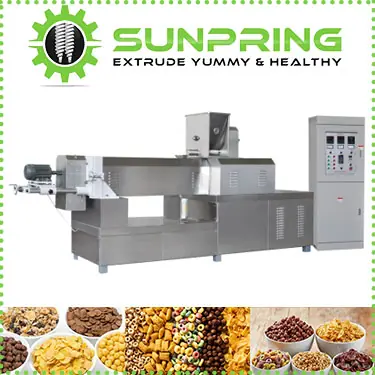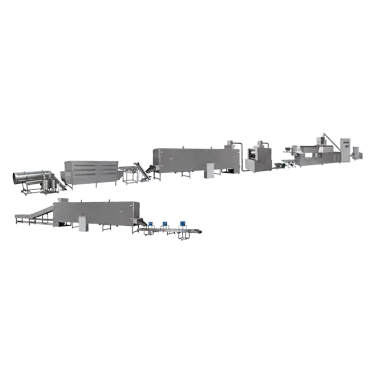Since time immemorial, cereals have been a staple breakfast meal for most people. Most of these cereals are either ready-to-eat or require brief cooking, making them perfect for any individual who is mindful of saving time. They also offer a wide array of nutrients which are needed for daily growth and development.

How do they make corn flakes? Today, the procedure of making corn flakes cereals has become technologically advanced to cope up with increasing demand for this product and improve its palatability and adaptability. This article will focus on explaining the general process of making corn flakes beginning from the processing of raw materials all the way through packaging and quality control.
Raw Materials
The primary raw material for making any corn chips or corn flakes is grain. Here, various types of grains such as wheat, oats, corn, barley, and rice may be used. Other ingredients for processing this cereal include yeasts, vitamins, minerals, preservatives, sweeteners, coloring agents and flavoring materials.
The sweeteners may include corn syrup, white sugar or brown sugar depending on the manufacturer. Other natural cereals may be sweetened by adding concentrated ordinary fruit juices. Flavoring ingredients that may be used here include cinnamon, chocolate, and other fruit flavors. Sometimes, dried fruits, nuts, and marshmallows may also be added to improve the taste of cereals.
Since most vitamins are destroyed during cooking, they are usually supplemented to replenish lost ingredients. One of the most common minerals that are lost is vitamin B1. This vitamin is added to the cereals alongside antioxidants and preservatives such as BHT and BHA, which prevent them from going bad or rancid.
Processing of Corn Flakes

Grain preparation may include the following steps:
Once the seed is received in the processor, it is inspected for quality and cleaned before the actual processing starts. Next, the grain is moved into a crushing machine where the seeds are pounded to remove the bran layer. After separating the grain from the outer covering, further grinding may be done to obtain a fine powder.
After that, the fine powder is transferred to a large rotating pressure cooker, where flavoring ingredients, minerals, vitamins, salt, sweeteners and water are added and mixed thoroughly. During this process, parameters like temperature, time and speed of rotation are checked to allow optimum cooking. Depending on the type of grain involved, these parameters will vary from one type of food to another. Whole grains may require longer cooking time, unlike partial grains.
The cooked cereal is then transferred to a conveyor belt, which delivers the food to a drying chamber, where excess water is removed using high-temperature cooking. Cooking is also done in a regulated state to ensure some water remains in the cereal to allow the formation of soft and robust mass that can be shaped as required.
When flour is used instead of whole grains, it is usually cooked in a specially designed machine called a food extruder. This device may consist of either a single or twin screw within a heated casing. The motion of these screws guarantees the mixing of flour with salt, water, flavorings, vitamins, minerals, food coloring and sweeteners. The device also moves this mixture through the extruder, cooking it in the process. Once the cooked cereal reaches the end of the machine, it is cut by a rotating knife and extruded as pellets. The pellets are further dealt with in the same manner as cooked grains.
There are different varieties of corn flakes depending on their processing:
Preparing Corn Flakes or Flakes Cereals
Preparation of corn flakes begins with a process called tempering. Tempering involves stabilization of the moisture content in the grain. Once the moisture has been stabilized, the seeds are flattened using large metal rollers, producing flakes which are then conveyed to the ovens for cooking. They are also tossed in a blast of hot air to facilitate drying. In most cases, extrusion machines are used to manufacture these pellets.
Shredded Cereals

When it comes to shredded cereals, their cooking is unique. Here, wheat is used as the main ingredient. When making this formula, the grain is first boiled to allow moisture to enter it and cooled to facilitate tempering. It is then placed in between two metal rollers, where it is rolled. Here, one roller is grooved or rough while the other is smooth. A metal comb is stationed next to the grooved roller with a tooth located inside each groove. When the cooked grain passes between the grooved roll, it is cut into pieces by the teeth of the combs and falls off the rollers in a continuous stretch. The stretch is moved in a conveyor belt and cut into small pieces in a cutting chamber. Finally, they are baked to preferred color and dryness. Sometimes, shredded cereals are processed in the same way as extruded pellets.
Coatings

Once the cereals have been cooked and cut into proper sizes, they may be coated with minerals, sweeteners, vitamins, preservatives and food colors. The frosting is done by spraying the cereal with a thick, hot syrup of sugar in a rotary drum. As the corn dries, the spray forms a white layer of frosting.
Packaging

When the cereals are ready, they are packaged in airtight, watertight plastic containers, ready for transport and storage. These bags can further be packaged in cardboard boxes to protect them from getting damaged.
Packaging is usually done by an automated machine, which packs up to forty boxes in a minute.
Quality Control
The manufacture of breakfast cereals involves constant monitoring to guarantee production of high-quality food for human consumption. Here, sanitation and sterilization are the essential requirements. The grain is also checked for any foreign material when it arrives in the processor when it is baked, and when it is coated.

Temperature and moisture are also vital for determining the quality of the final product. These conditions are inspected during cooking and drying processes. Mineral contents are also measured and tested to ensure accurate nutritional information is indicated in the product. Once the bags have been filled, they are weighed and labeled accordingly.
Additionally, the shelf life of the processed cereals is continually tested to ascertain its precise storage life. This test is usually done by subjecting the corn to higher than ordinary temperatures and moisture to accelerate the spoiling process.
The advancement in the manufacturing technology has made it possible to produce flaked, shredded and puffed cereals in a very efficient manner. The food extrusion machine is one such excellent example. Latest extruders use the twin screw technique which guarantees smooth and efficient production of cereals.




I want to make corn flakes for use in making Corn Flake Chivda which is a fried savoury Indian product. Please update me on the process line and the additives to the corn so that the final product expands during the last stage frying.